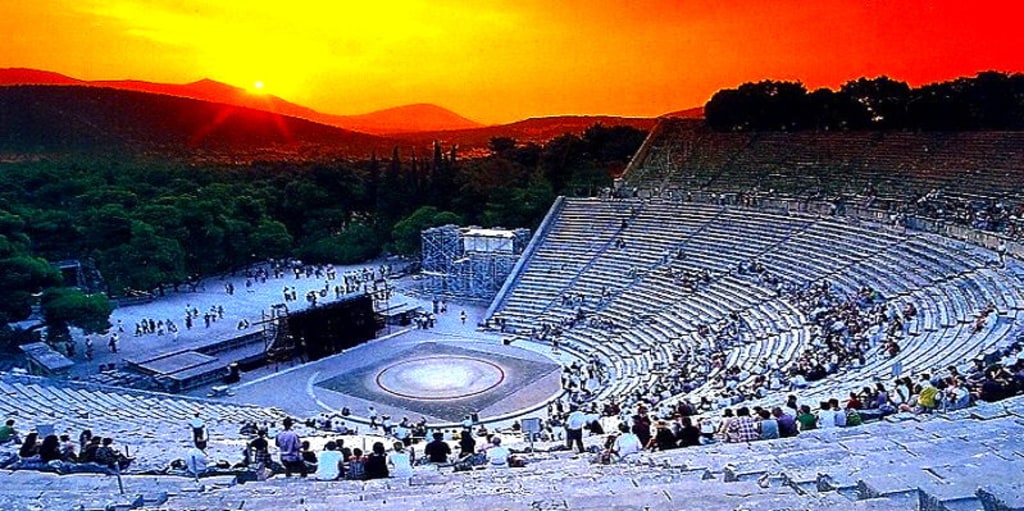Greek Theatre of Epidaurus: A Marvel of Ancient Acoustics and Architecture
History

The Greek Theatre of Epidaurus stands as a testament to the architectural ingenuity and cultural sophistication of ancient Greece. Renowned for its exceptional acoustics and harmonious design, this ancient amphitheater continues to captivate audiences and scholars alike. This article explores the origins, design, construction techniques, cultural significance, and enduring legacy of the Greek Theatre of Epidaurus.
Origins and Historical Context
The Theatre of Epidaurus, located in the sanctuary of Asclepius, the god of medicine, dates back to the 4th century BCE. The sanctuary, situated in the northeastern Peloponnese, was a major healing center in ancient Greece. Designed by the architect Polykleitos the Younger, the theatre was built during the height of Greek classical civilization, reflecting the cultural and artistic achievements of the era.
Epidaurus was known for its religious and cultural activities, and the theatre played a central role in these events. It hosted dramatic performances, music competitions, and religious festivals, serving as a focal point for communal gatherings and cultural expression.
Design and Construction
The design and construction of the Theatre of Epidaurus are characterized by their precision, aesthetic beauty, and functional excellence:
- Architectural Layout: The theatre consists of three main parts: the orchestra, the skene (stage building), and the theatron (seating area).
- Orchestra: The circular orchestra, about 20 meters in diameter, was the central performance space. It was surrounded by a low stone wall and provided ample space for actors and chorus members.
- Skene: The skene, initially a simple wooden structure, evolved into a more elaborate stone building. It served as a backdrop for performances and housed dressing rooms and storage areas.
- Theatron: The theatron, or seating area, is a semi-circular arrangement of limestone seats carved into the hillside. It could accommodate up to 14,000 spectators, ensuring a large audience could enjoy the performances.
- Acoustics: The theatre is renowned for its exceptional acoustics, allowing even the faintest sound to be heard clearly from the stage to the highest rows. This was achieved through careful attention to the shape, materials, and orientation of the structure.
- Construction Techniques: The construction involved advanced engineering and craftsmanship:
- Natural Slope Utilization: The seating area was built into the natural slope of the hillside, enhancing stability and providing a panoramic view.
- Material Selection: High-quality limestone was used for the seats, reflecting sound and contributing to the theatre's acoustics.
- Precision and Symmetry: The theatre's design exhibits remarkable symmetry and geometric precision, reflecting the principles of classical Greek architecture.
Cultural and Artistic Significance
The Theatre of Epidaurus held profound cultural and artistic significance in ancient Greece:
- Dramatic Performances: The theatre was a premier venue for the performance of Greek tragedies and comedies. Plays by renowned playwrights such as Sophocles, Euripides, and Aristophanes were likely performed here, contributing to the cultural life of the region.
- Religious and Social Functions: As part of the sanctuary of Asclepius, the theatre was integral to religious festivals and ceremonies. It provided a space where citizens could gather, worship, and celebrate communal values.
- Artistic Excellence: The theatre exemplifies the artistic excellence of ancient Greek culture. Its design and construction reflect the Greeks' mastery of architecture, engineering, and acoustics, as well as their commitment to creating spaces that inspire and elevate the human spirit.
Historical Impact and Rediscovery
The historical impact of the Theatre of Epidaurus extends beyond its original cultural context:
- Archaeological Discoveries: Excavations and restorations, particularly in the 19th and 20th centuries, have uncovered and preserved the theatre. These efforts have provided valuable insights into ancient Greek architecture and performance practices.
- Tourism and Education: Today, the theatre is a major tourist attraction, drawing visitors from around the world. It serves as an educational resource, offering a tangible connection to ancient Greek culture and its contributions to art and architecture.
Legacy and Modern Relevance
The legacy of the Greek Theatre of Epidaurus continues to resonate in contemporary culture and scholarship:
- Cultural Heritage: The theatre is celebrated as a masterpiece of ancient Greek architecture and acoustics. It is recognized as a UNESCO World Heritage Site, symbolizing its enduring cultural importance.
- Architectural Influence: The principles of design and acoustics exemplified by the Theatre of Epidaurus have influenced modern theatre architecture. Contemporary architects and engineers study its features to inform the design of performance spaces.
- Artistic Inspiration: The theatre remains a venue for dramatic performances, continuing the tradition of Greek theatre. Modern productions of ancient plays, as well as contemporary works, are staged here, maintaining its role as a vibrant cultural site.
Conclusion
The Greek Theatre of Epidaurus stands as a monumental achievement in ancient architecture and acoustics. Its design and construction reflect the advanced knowledge and artistic vision of ancient Greek civilization. Rediscovered and preserved, the theatre continues to inspire and educate, offering a window into the cultural and artistic life of classical Greece. As a symbol of architectural ingenuity and cultural heritage, the Theatre of Epidaurus remains a testament to the enduring legacy of ancient Greece's contributions to the arts and sciences.
About the Creator
Marveline Merab
“History never repeats itself. Man always does.”
― Voltaire
Enjoyed the story? Support the Creator.
Subscribe for free to receive all their stories in your feed. You could also pledge your support or give them a one-off tip, letting them know you appreciate their work.






Comments
There are no comments for this story
Be the first to respond and start the conversation.